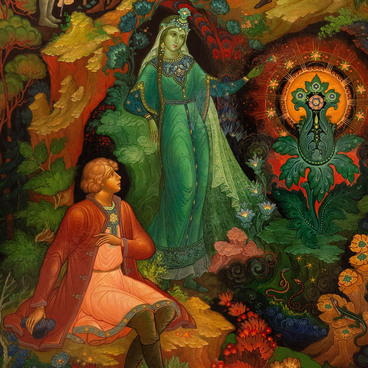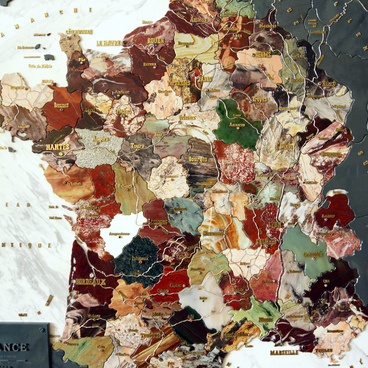“The Mistress of the Copper Mountain” is the largest sculpture in the collection of the Museum of Stone-Cutting and Jewelry Art History. Its height is 134 centimeters. It was made of blocks and plates of selenite (a soft mineral, a variety of gypsum which is mined in the Urals).
The sculpture depicts a young woman with a long braid. She is dressed in a traditional Russian sarafan (sundress). One can see a kokoshnik (traditional headdress) on her head made of selenite crystals, which grew together, with three large round inserts in the center. A stone lizard is at the feet of the Mistress. In Pavel Bazhov’s tales, it was her servant and assistant. In addition, sometimes the Mistress of the mines appeared to people as a lizard with a crown.
The sculpture depicts a young woman with a long braid. She is dressed in a traditional Russian sarafan (sundress). One can see a kokoshnik (traditional headdress) on her head made of selenite crystals, which grew together, with three large round inserts in the center. A stone lizard is at the feet of the Mistress. In Pavel Bazhov’s tales, it was her servant and assistant. In addition, sometimes the Mistress of the mines appeared to people as a lizard with a crown.
In the Bazhov tales, it is mentioned that the Mistress’s dress looks different all the time.



